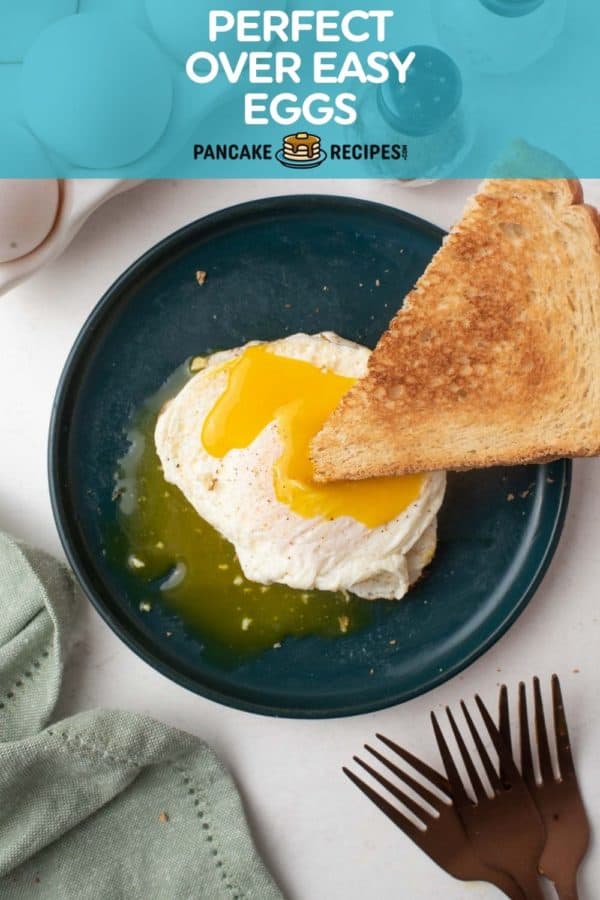How to Make Over Easy Eggs
Learn how to make eggs over easy like a professional! Enjoy a restaurant-quality egg breakfast any day of the week with this easy-to-follow, step-by-step guide to cooking perfect over easy eggs!
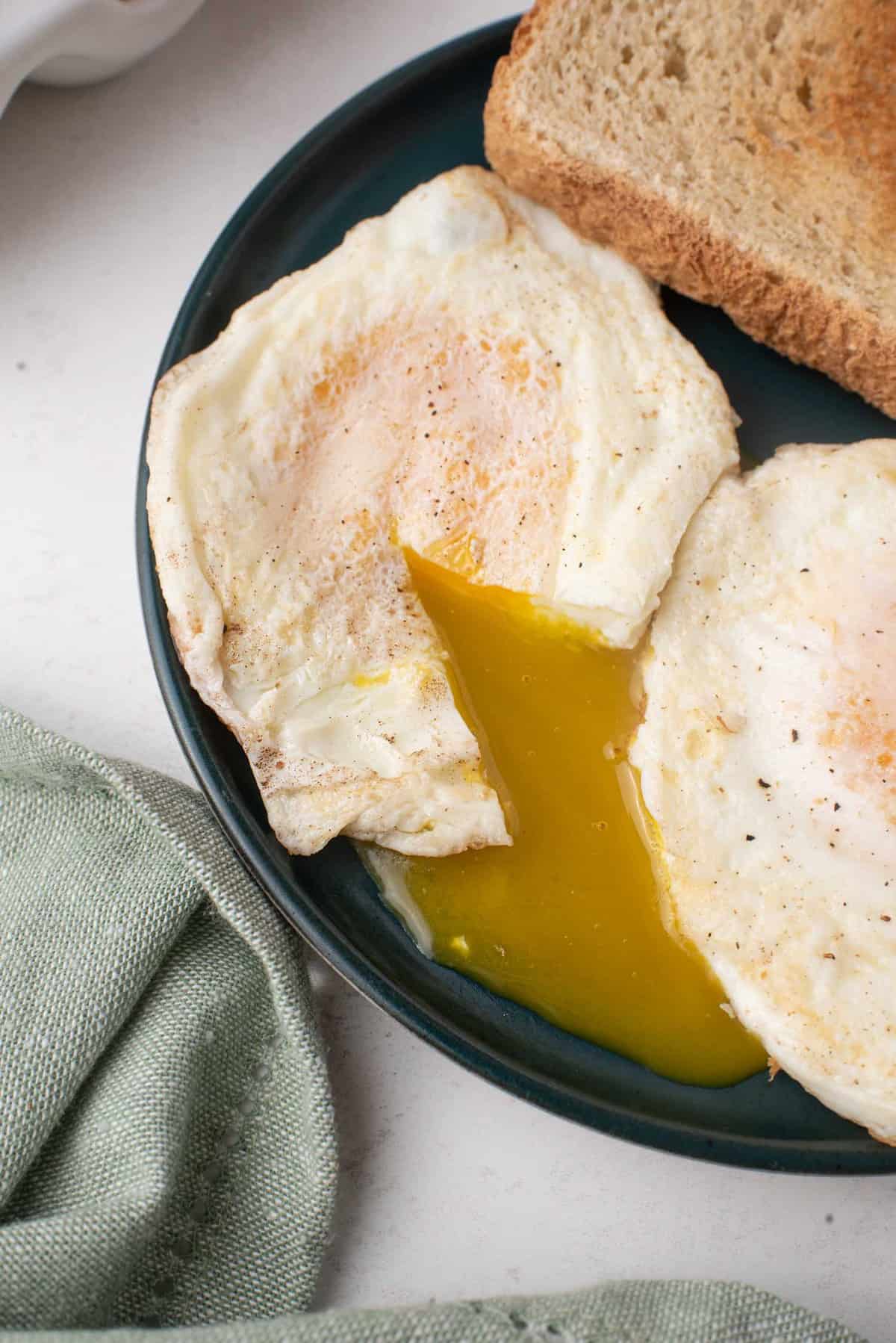
Eggs have always been a part of an all-American breakfast. Whether you’re a steak and eggs kind of person or the avocado toast with egg type, there is no shortage of ways to enjoy a nice egg breakfast.
One of my favorite breakfasts (actually, just one of many because I’m a breakfast girl) is avocado toast, crispy bacon, and a cup of coffee with brown sugar coffee syrup (if I’m in the mood for indulgence)!
About cooking eggs over easy
Making perfect over easy eggs isn’t reserved for restaurant meals or your favorite breakfast joint. Making them at home to rival anything you’ve ordered on a menu is certainly within reach. However, getting it right once is one thing but having them turn out consistently perfect is another thing. And this is the place to learn how to do just that!
Why eat eggs?
Eggs are healthy, high in protein and omega 3s, and are a great source of all kinds of vitamins and minerals (source). When paired with a healthy fat like avocado and extra veggies like in this roasted tomato avocado toast, you have a powerhouse breakfast that will fuel your whole day.
This recipe will walk you through the process step by step so that soon it will become a no-brainer. Learning to cook the best over easy eggs is a skill you’ll want to keep in your back pocket for the egg lovers in your home. Once you master over-easy eggs, it’s just a matter of a few extra seconds and you’ll also be able to make over medium or over hard eggs, if desired.
Getting a perfectly cooked egg white surrounding a runny yolk is easiest with the freshest eggs you can find. Whether they’re free-range, free-run, organic, or otherwise, just be sure they’re nice and fresh.
Go ahead and grab your nonstick skillet and let’s get crackin’!
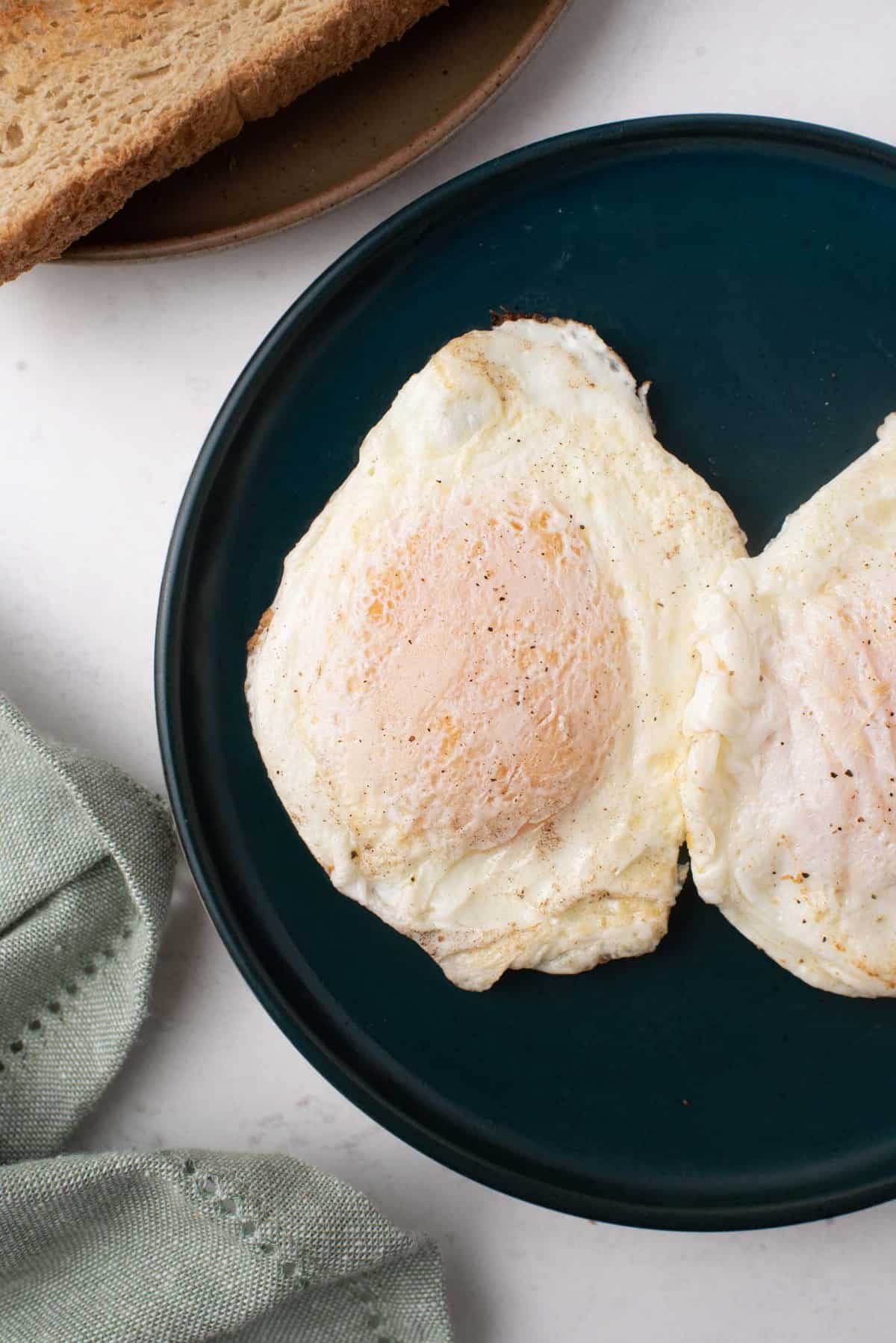
What you need
- Eggs (the fresher the better!) – This recipe is for 2 eggs but there’s no limit to how many eggs you can cook in batches.
- Butter – Butter is used to create a nonstick surface so the eggs can slide right out of the pan. You can also use ghee (aka clarified butter), which is butter that has had the milk solids removed leaving behind the liquid fat. If you’d prefer to use oil, olive oil or avocado oil are great choices. If you have a good nonstick pan, you can use less butter/oil if you want.
- Salt and Pepper – Salt and pepper are used as a simple seasonings for the eggs. Adjust the amount according to your taste.
How to make over easy eggs
Heat a small nonstick skillet over medium-low (closer to low than medium) heat. Add butter. When the butter starts to melt and bubble, swirl it around the pan.
Crack one egg at a time by gently tapping on the counter. Carefully break apart the eggshell, dropping the egg into the pan. Be careful not to break the yolks. Repeat with the other egg. Season with salt and pepper.
Cook for 2-3 minutes or until the whites of the eggs are mostly firm. The yolk will still be very runny at this point.
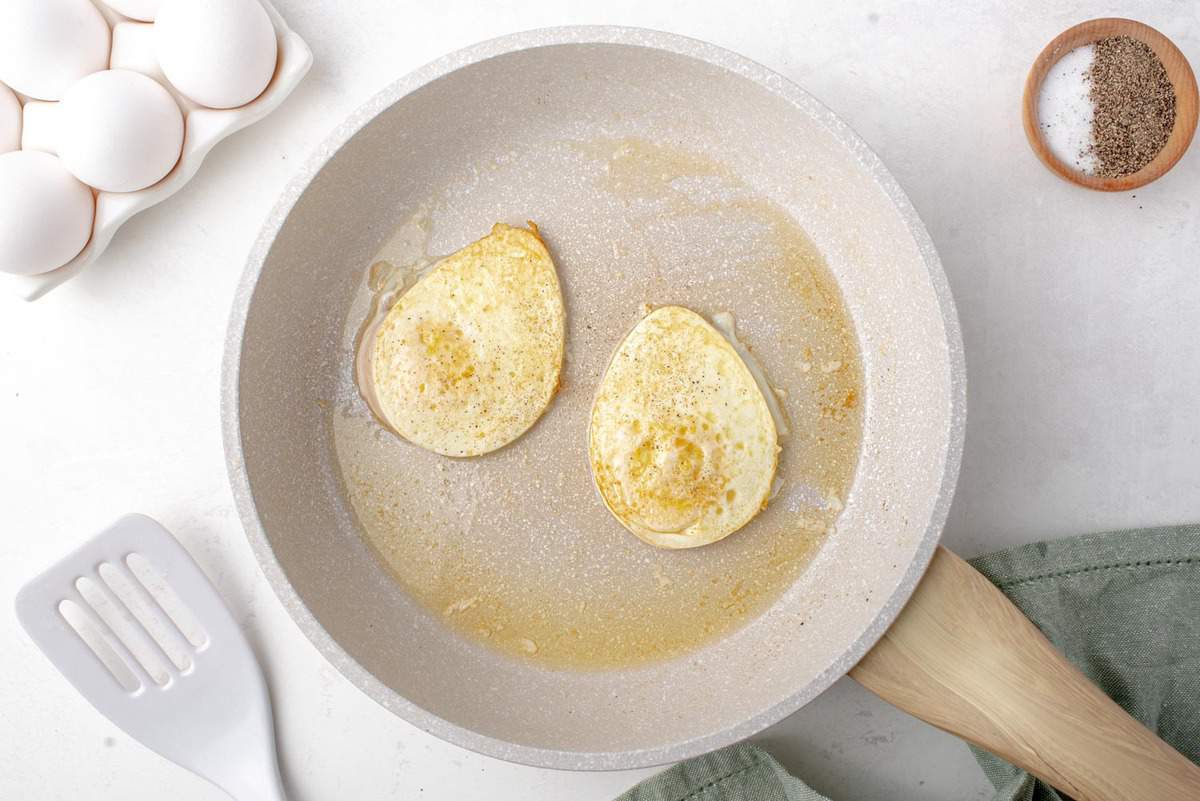
Use a thin spatula to carefully flip the egg and cook for 30 seconds more or until the yolk has desired firmness. For an over easy egg, it won’t take long!
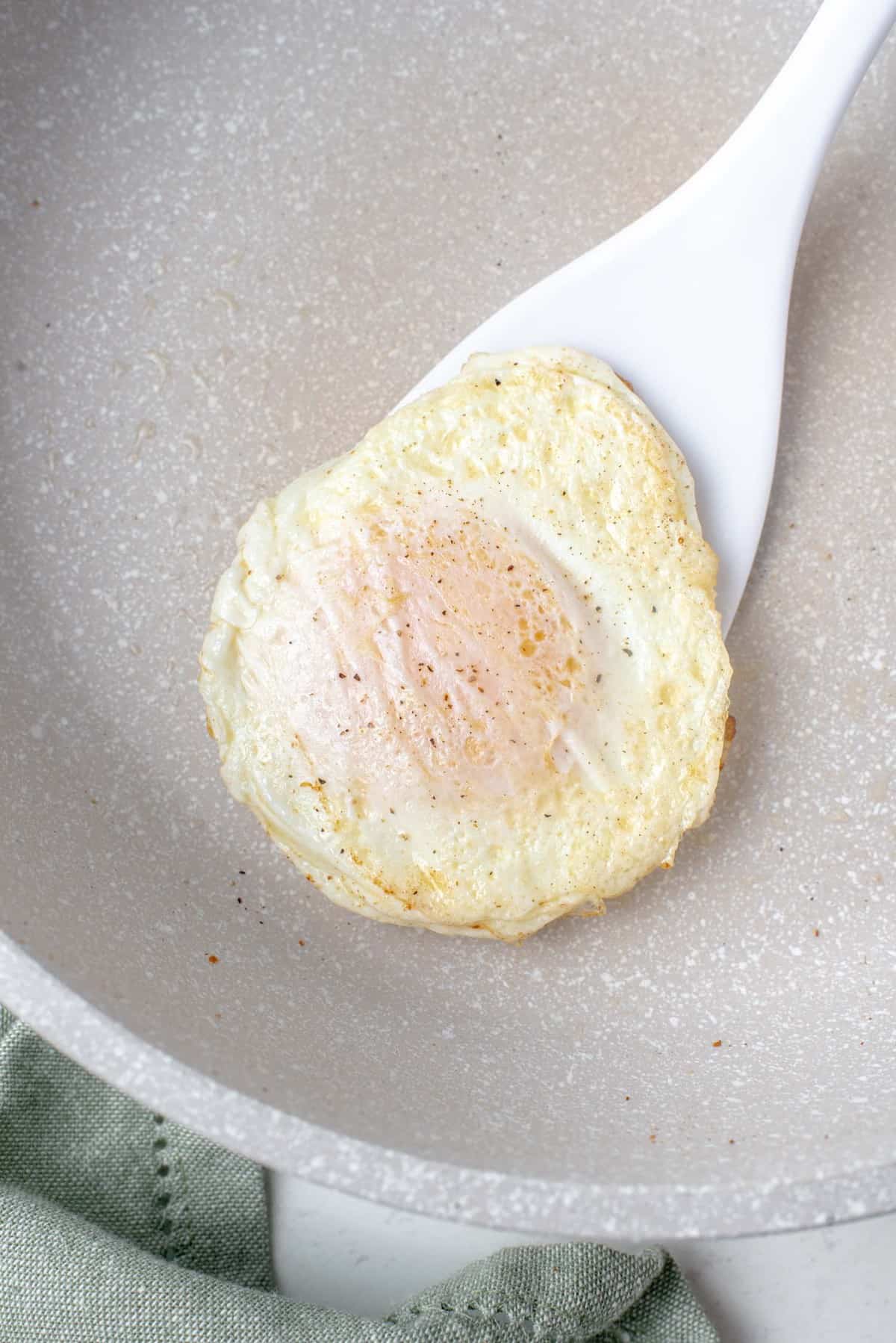
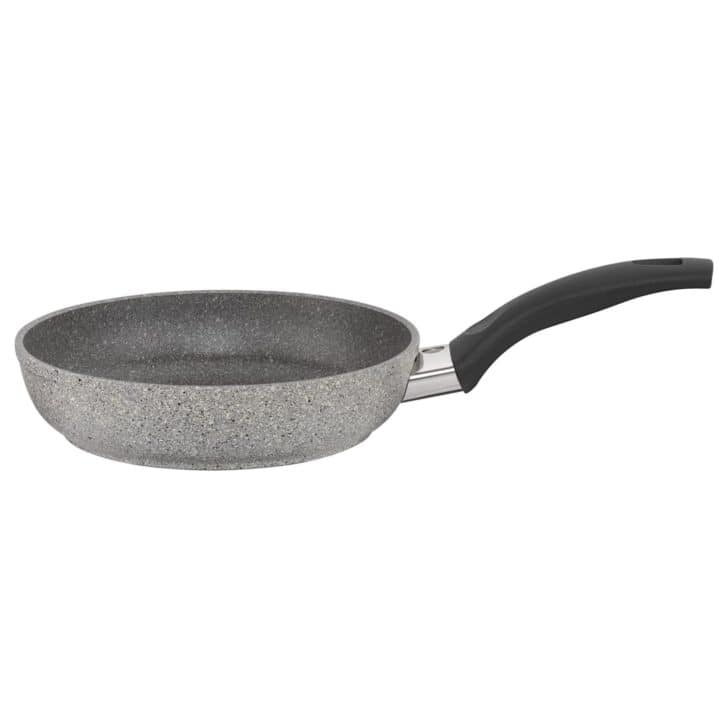
Featured Product
Nonstick Frying Pan
You’ll need a great nonstick frying pan for this recipe – this is my favorite!
The Difference between Over Easy, Over Medium, and Over Hard Eggs
“How would you like your eggs?”
Does that question make anyone else stutter and forget everything they know about anything? Scrambled is easy, but things might get a little foggy as you move away from that classic preparation. We’re working on adding instructions for all the ways (basted, poached, boiled, sunny side up, etc.) but in the meantime, let’s talk easy/medium/hard.
- Over Easy: Egg is flipped and cooked on both sides, but the yolk is still completely runny.
- Over Medium: Egg is flipped and cooked on both sides. Yolk is slightly runny in the center but mostly cooked. Some people call this a “jammy” yolk since it has the consistency of jam.
- Over Hard: Egg is again flipped during cooking, and this time it is cooked long enough to cook all the way through. The yolk will be similar to what you see in a fully cooked hard boiled egg.
See the image below for a visual of what each egg looks like!
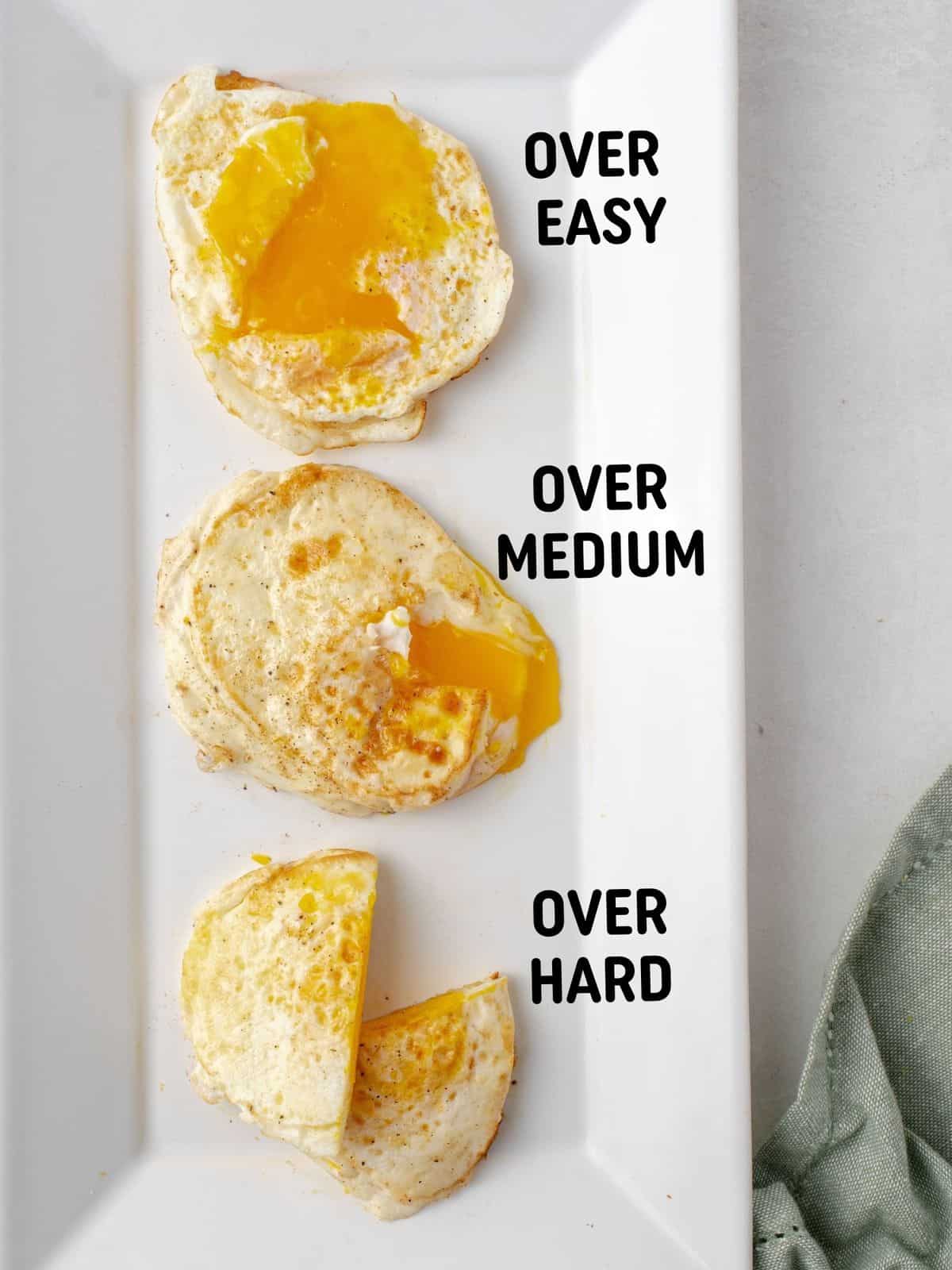
FAQs
Sunny side up eggs are similar to over easy eggs but they’re not quite the same. The main difference is that you don’t flip a sunny side up egg. You may also find that the edges of an egg sunny side up are slightly crispy.
Any nonstick pan will work. Ceramic, stainless steel, or a well-seasoned cast iron skillet are good choices, too.
How to make this recipe your own
- Season the eggs to your liking. Salt and pepper is a classic way to go but feel free to add what you like. A sprinkling of red pepper flakes for heat, smoked paprika for smokiness, or everything bagel seasoning for yummy flavor. Garnish with chives, if desired.
- Complete your breakfast or brunch with a side of sweet potatoes like in this sheet pan breakfast hash.
- Top off your breakfast nachos with a couple of eggs over easy and use the chips to scoop up the yolk!
- Enjoy with a piece of buttered toast and use it to soak up all of that delicious egg yolk.
- For a gluten-free breakfast, serve it alongside a stack of keto pancakes.
- A classic buttermilk pancake breakfast isn’t complete with eggs!
Storage Tips
If you can help it, don’t store over easy eggs. They’ll fall apart, the yolk will run, and they’re just not the same. Technically, you can store them in the fridge in a covered container for up to 3 days, if you must. My advice is to only cook what you need! These eggs take no time at all to make (really only about 5 minutes!) and are best enjoyed right away.
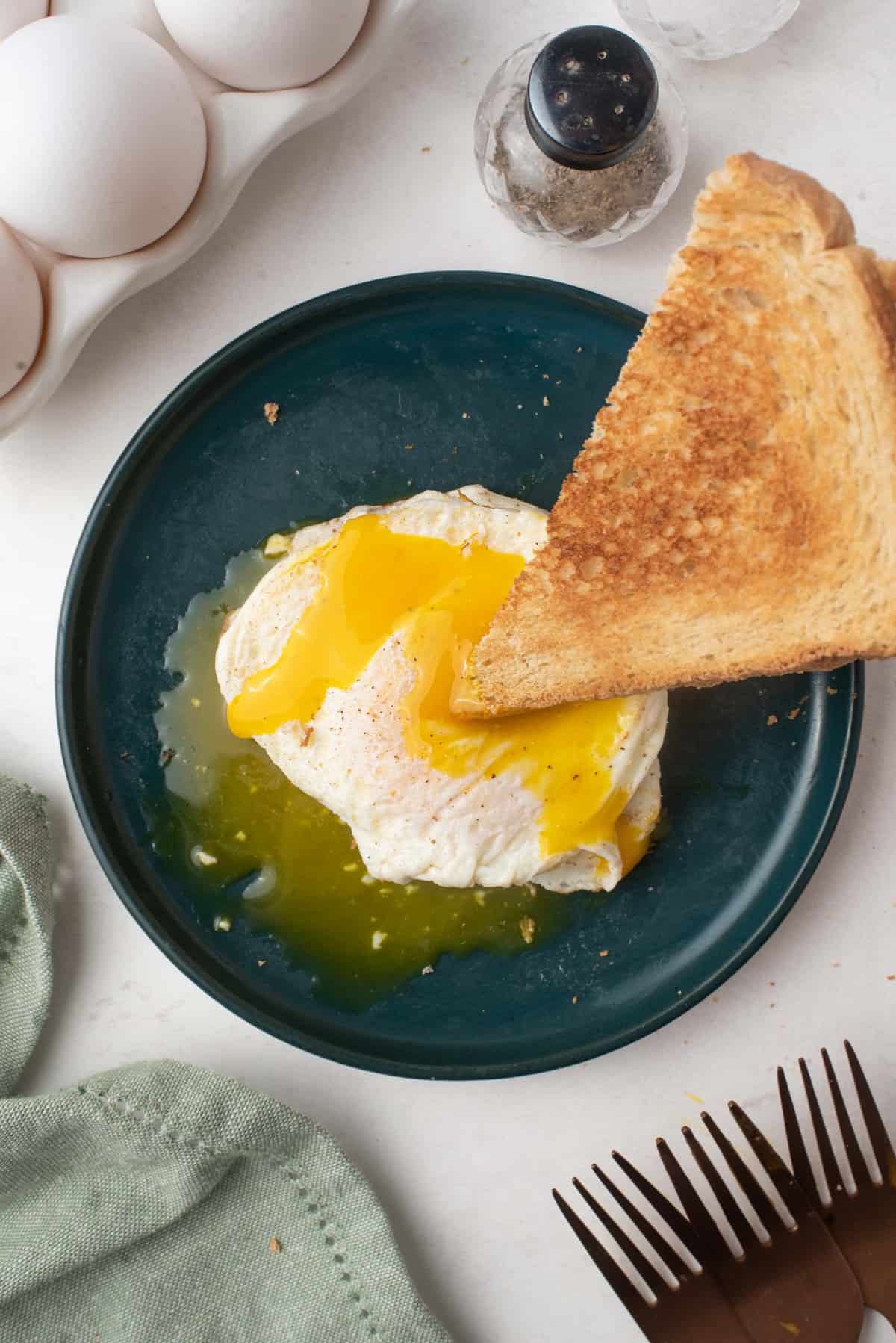
More Breakfast Basics
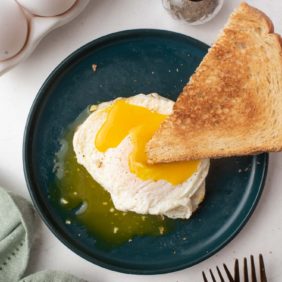
Get the Recipe: How to Make Over Easy Eggs
Ingredients
- 2 eggs (the fresher the better!)
- 1 tablespoon butter, ghee, or olive oil
- salt and pepper to taste
Instructions
- Heat a small nonstick skillet over medium-low (closer to low than medium) heat. Add butter. When butter starts to melt and bubble, swirl it around pan. Add eggs, being careful not to break the yolks. Season with salt and pepper.
- Cook for 2-3 minutes or until the whites of the eggs are mostly firm. The yolk will still be runny at this point.
- Use a thin spatula to carefully flip egg and cook for 30 seconds more or until yolk has desired firmness.
Notes
- If you’re not a pro at cracking eggs, that’s okay! Crack them in a bowl before adding them to the pan. It’s easier to fish out any shells that way, and easier to add them to the pan without breaking the yolks.
- If desired and you have a good nonstick pan, you can use less butter/oil.

